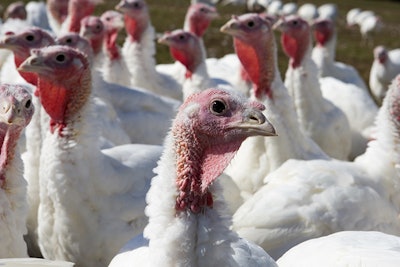
Avian pathogenic Escherichia coli (APEC) may play a role in turkey cellulitis, acting as a gateway organism for the primary cause, finds new research from the University of Georgia.
“The old rule of thumb for cellulitis was ‘always clostridium,’” said Dr. Catherine Logue, PhD, MIFST, Professor of Population Health at the University of Georgia Poultry Diagnostic and Research Center. “I’m not convinced that clostridium is always involved because APEC-involved cellulitis is common in the broiler industry. So, I was curious as to whether APEC would be present in cellulitis in turkeys.”
The research revealed that the primary cause of cellulitis is still clostridia. However, the project detected the presence of APEC in both tissues and litter, suggesting that it also plays a significant role in the disease.
The project was funded by the U.S. Poultry and Egg Association.
What is cellulitis?
Turkeys with cellulitis, also known as clostridial dermatitis, show inflammation in the groin, tail and breast regions and discoloration of the skin around the thighs, abdomen, keel, tail region, back and wings. The disease, which typically results in increased mortality and lost product, is considered one of the most critical issues facing the turkey industry
“Cellulitis is a huge loss maker for the turkey industry. You’ve got these beautiful birds coming up on 30 pounds and somewhere around 10-12 weeks, is when cellulitis appears,” Logue explained. “Every bird that doesn’t make it to the slaughter line is money down the drain.”
Ultimately, reducing the incidence of cellulitis will require a holistic approach.
“It’s a challenge. It’s always going to be a challenge. I don’t think there’s one single magic bullet that will help manage cellulitis. I think you have to have good monitoring of biosecurity, remove birds as soon as symptoms show, work closely with veterinarians and partner with researchers to better understand problem barns and form a solution,” Logue concluded.
Like what you just read? Sign up now for free to receive the Poultry Future Newsletter.

















